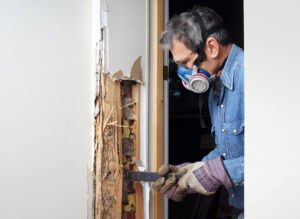As Southern Florida enters the hottest season of the year, we aren’t the only creatures looking to cool off. Roof rats invade homes to take refuge from the heat in air-conditioned roofs and attics.
Unfortunately, these rodents can do a ton of damage to your home.
Prevention is the most effective way to protect your home from furry intruders. If you’ve already noticed signs of wildlife, it’s crucial you know what species have moved in. Then, implement suitable removal strategies.
If you’re wondering how to get rid of roof rats, keep reading. Here are the four crucial steps you need to take.
What Are Roof Rats?
Also known as ship rats, roof rats live in along the coasts of the United States. Unlike their cousins, the Norway rat, they prefer warm climates. Hence their growing numbers in Southern Florida.
Roof rats have a distinct appearance. With black fur and long, thin tails, their ears are large and round. Most only weight between 5-9 ounces and are quite sleek.
These quick critters are agile and excellent climbers. They prefer to live in upper levels of buildings, like in attics, roofs, and top floors.
As nocturnal rodents, they’re most active at night. They eat fruit, berries, nuts, and occasionally meat. Hearing them during the day is a sign that their numbers are high.
How Much Damage Can They Cause?
Roof rats, like all species of rats, enjoy building nests for shelter and safety. They will hide their food in their nests and spend the daytime sleeping in them.
Unfortunately, building nests and doing other survival behaviors can damage your house.
Roof rats are often thirsty and searching for water. They can chew through air conditioner drip lines, irrigation lines, and even pipes. Plastic and metal are no match for the sharp teeth of roof rats.
To build their nests, they may burrow into your home’s insulation. Or, they could pull pieces of the insulation off to create their nest elsewhere. Roof rats tend to chew on electrical wire, drywall, and roof eaves.
Until you know you have roof rats, you won’t know how much damage they’re causing. Keeping your house roof rat-free is crucial to keeping the cool air inside this summer.
How to Get Rid of Roof Rats
DIY removal isn’t as effective as hiring professional rodent control services. But, there are lots of things you can do to prevent their invasion and reduce the numbers of them in your home.
1. Inspect Your Home
The first step is to notice their signs and assess the damage. As mentioned, the sooner you detect them the sooner you can protect your house from damage.
Some common signs of roof rats are droppings, grease trails, and agitation from your pets. Roof rat droppings are about half an inch in length and are pointed at the ends.
You might see them running along the tree branches and power lines near your roof.
Climb into your attic and check it out. Are there any signs of invaders? You might see droppings, a nest, or damage in the insulation and walls. There might also be food remnants.
When you go to bed at night, pay attention to any sounds you hear. You might hear them in the walls or ceiling scurrying around. If you see signs of roof rats, call a pest control company for help with the following steps.
2. Block Entry Points
How are the roof rats entering your home? Are there shingles missing or holes in the walls? Prevent them from accessing your attic by blocking their entry points.
This could mean repairing your roof and walls; seal any cracks or holes. When you have a mice infestation, sealing the tiniest of cracks is crucial. Roof rats are larger than mice, so you don’t have to be as detailed.
Make it difficult for rats to make your home theirs. If it’s too hard, they’ll move on and find an easier place to inhabit.
Some find that ultrasonic devices are useful in preventing roof rats. The frequencies emitted from these devices bother rodents’ ears, thus deterring them from entering.
3. Set Traps
This step is important but can be confusing. Which traps are best and where should I put them? Do setting traps even make a difference when you have a massive roof rat problem?
Trapping isn’t the cure to a large roof rat population. But, if you have the occasional critter passing through, they’re helpful.
Speak to a pest control company about which traps are best for roof rats. You can either place rodenticide baits or traps. Some prefer not to use rodenticides in case their pet or children gain access to it.
Snap traps are the traditional form of trapping and are still quite effective. There are also more modern electrical traps and glue traps.
4. Call a Pest Control Service
Blocking entry points and setting traps isn’t always enough to finish the job. Some rodent infestations are stubborn and determined to live in your roof.
For cases like these, it’s best to get the professionals involved.
Removing roof rats for good requires persistence and expertise. You may not have the time to keep checking traps in your attic or assessing your roof. Luckily, there are companies that cater to this very problem.
Look for a rodent control company that has lots of experience with roof rats. Southern Florida is notorious for these pests, but not all local companies are equal. You need a service that is efficient, fast, and follows-up.
Still Wondering How to Get Rid of Roof Rats?
Roof rats are common intruders in Southern Florida. If you notice signs of these pests in your roof or attic, you’re not alone. And, there are many things you can do to get rid of them and prevent them in the future.
Follow the four steps above on how to get rid of roof rats.
Command Pest Control has ample experience removing roof rats from Florida homes. Contact us to schedule an appointment.






